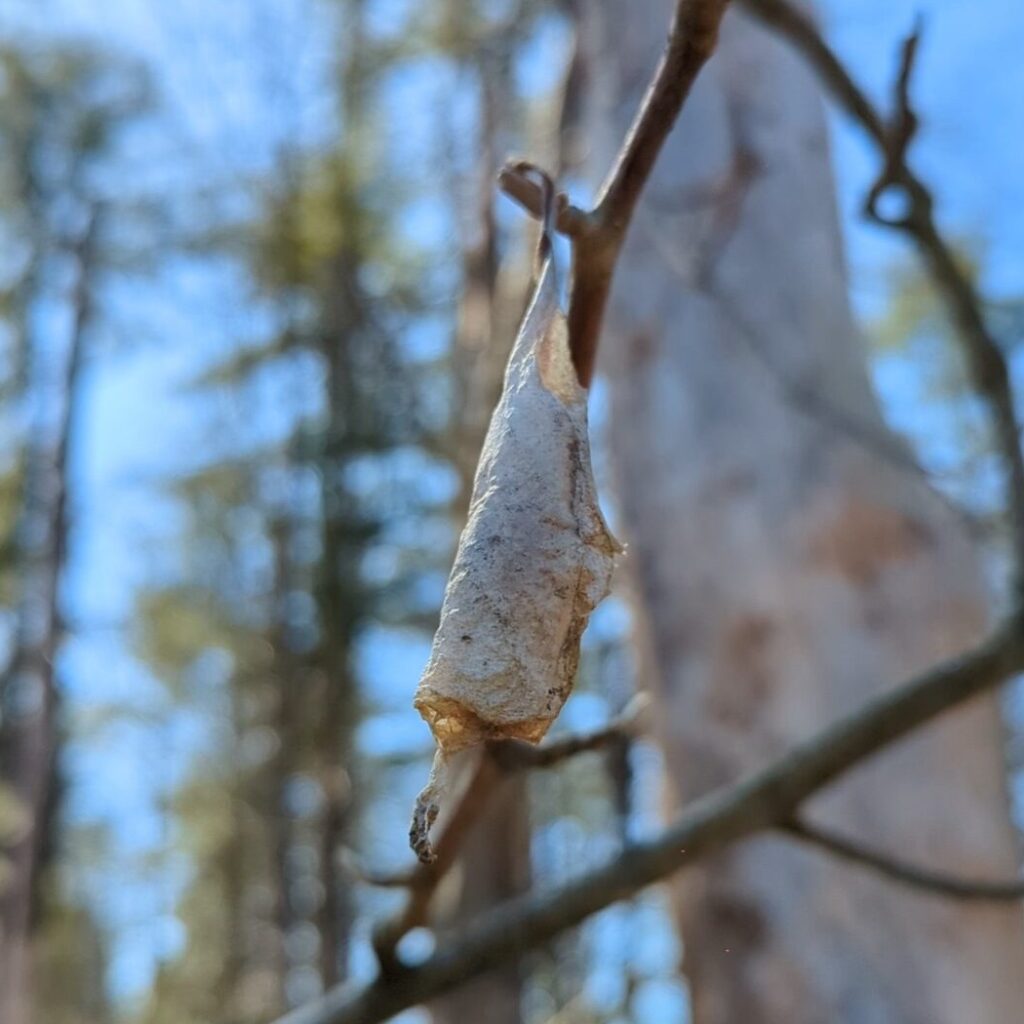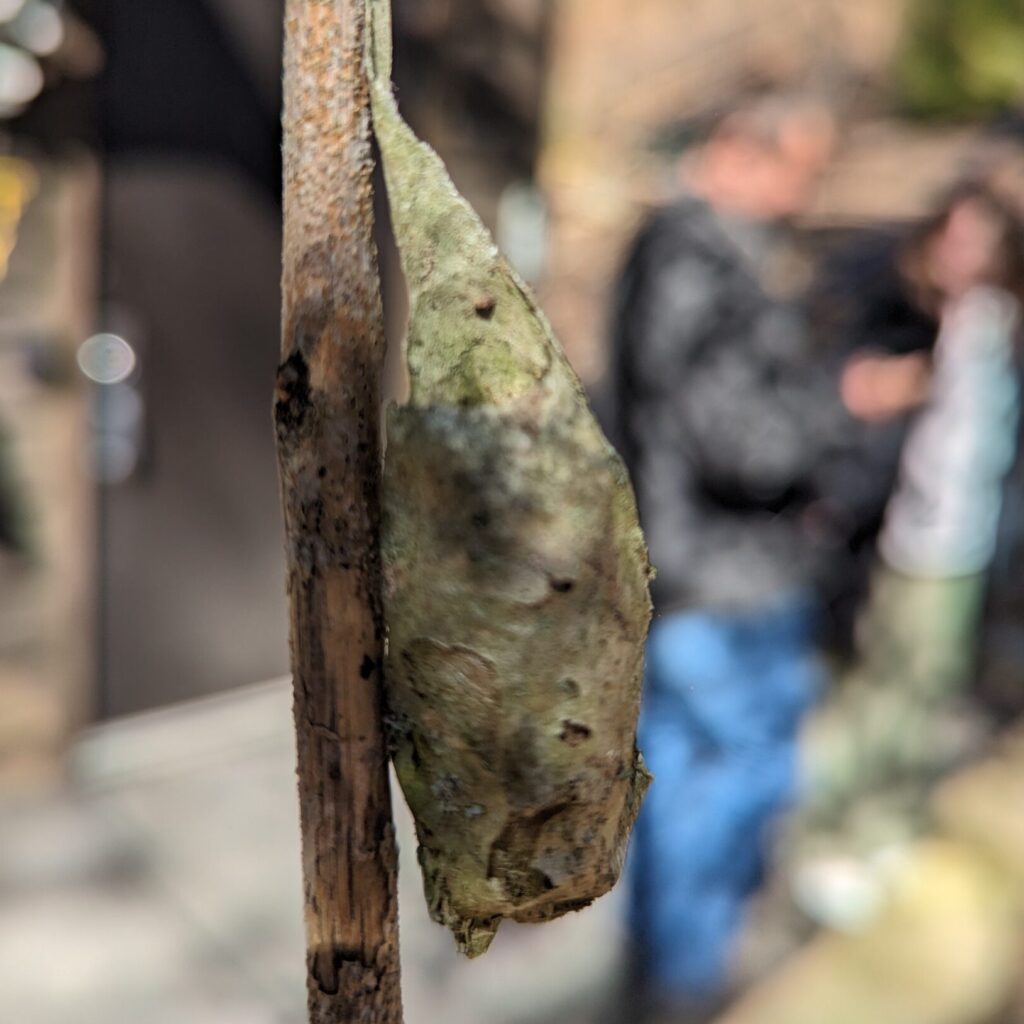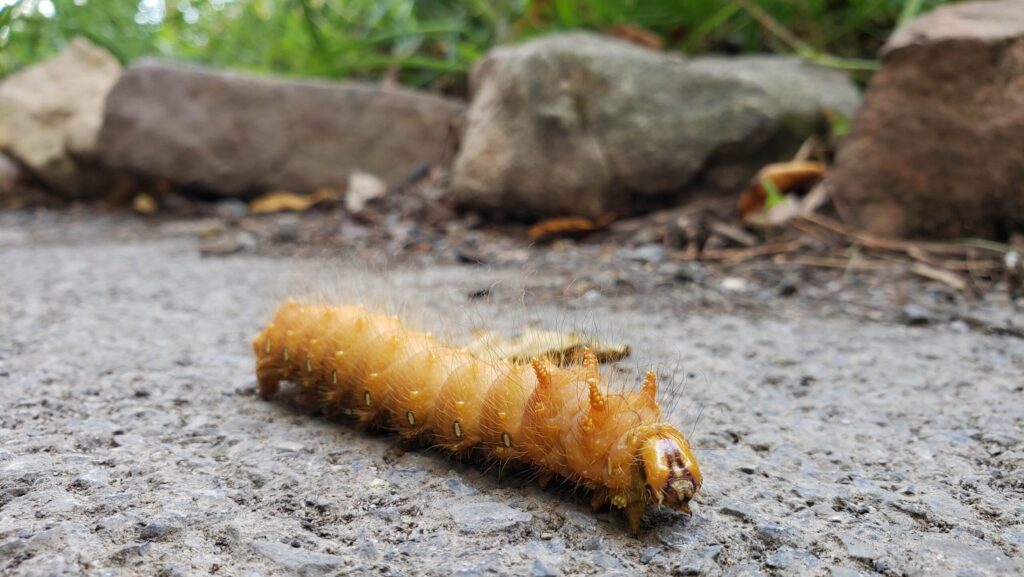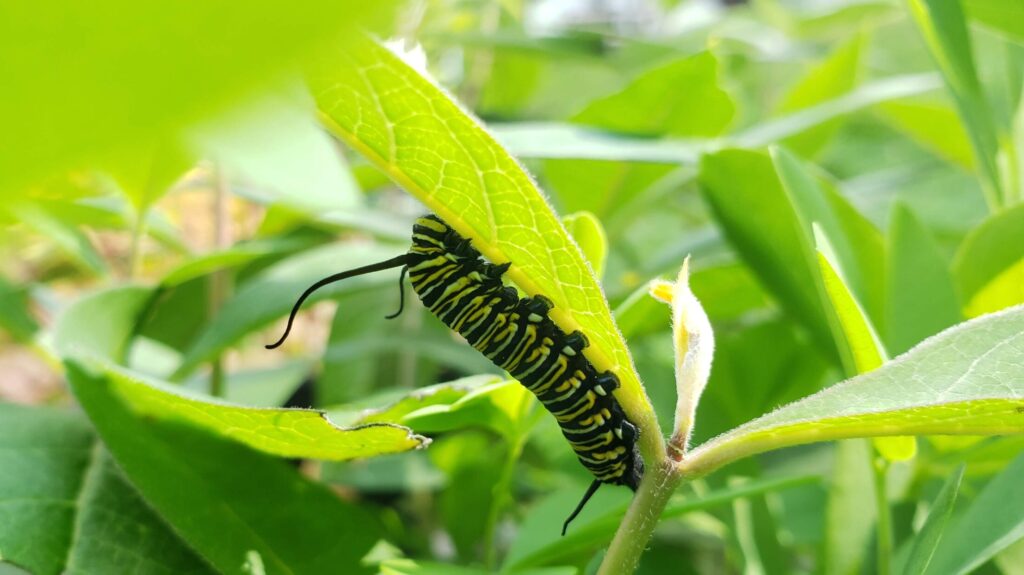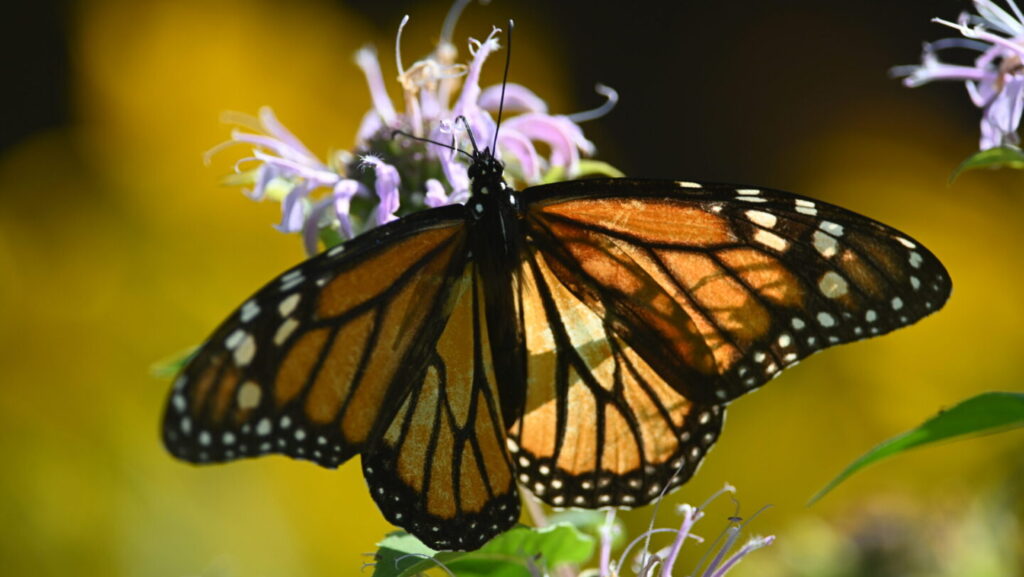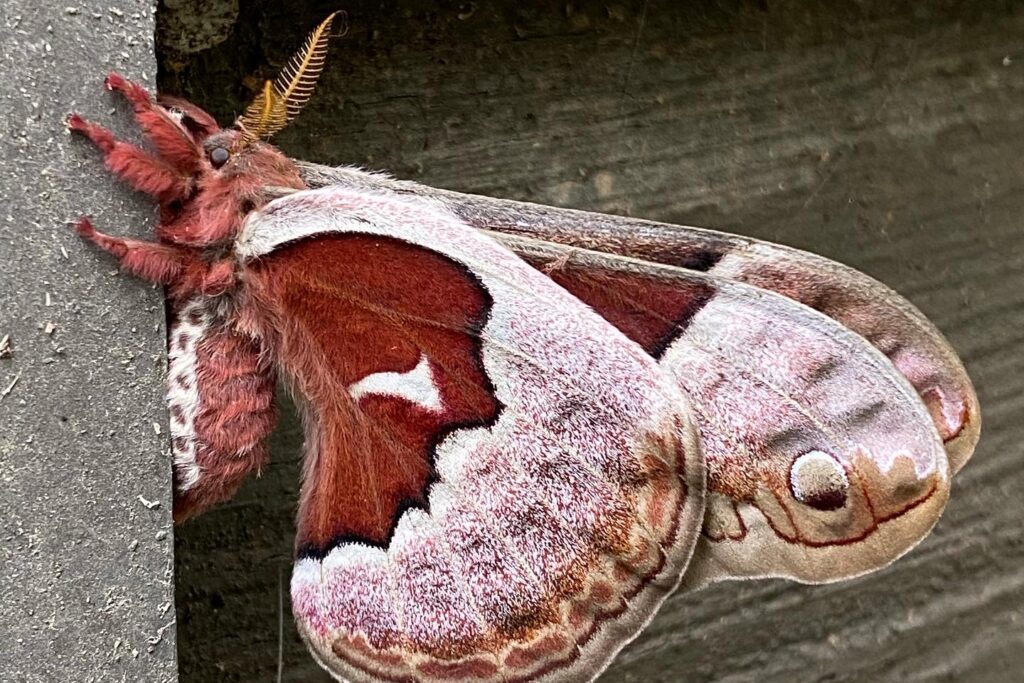Spring is quickly approaching, and the phenology of the natural world is changing with the weather. One staple of spring is the presence of pupas! You may be more familiar with the structure’s common name, a chrysalis or a cocoon! There is a difference between a chrysalis and a cocoon; what sets them apart is who creates it! A chrysalis is what a butterfly creates and a cocoon is created by a moth! Moth larvae weave a silk-like material into a protective casing (cocoon) to undergo their transformations. Butterfly larvae undergo a final molt and stay within the casing of the molt forming the chrysalis. Pupas can be found in trees, under leaves, or underground, it’s all determined by the specific species’ evolutionary preference (The Academy of Natural Sciences of Drexel University 2018).
Butterflies and moths have similar life cycles; both start their life cycle as eggs, then hatch into caterpillars (which is termed their larval stage) where they spend their time eating a ton of leaves, molting, and growing. Before reaching the adult phase, butterflies and moths both undergo complete metamorphosis (AMNH 2017). Complete metamorphosis is when the physical characteristics and food preferences of the larvae and adult forms are relatively different, and this looks different between moths and butterflies (The Academy of Natural Sciences of Drexel University 2018). But what’s happening inside these pupas?
While encased in the pupas, the larvae will completely change themselves all the way down to a cellular level. Once encased, they’ll release digestive enzymes that dissolve the larval form down to a goo-like consistency (yes you read that correctly, they turn to butterfly/moth soup). Within this puddle of cells, there are special cells called imaginal disks that survive the digestive enzyme and contain the genetic coding for all the adult-form body parts (legs, wings, eyes, etc.). Once the larval form is completely dissolved, those special imaginal disks are surrounded by protein-rich caterpillar goo that the imaginal disks can utilize to fuel rapid cell division. Then the adult body structures start reforming. Some species can salvage muscle groups and parts of their nervous system from their larval caterpillar stage to use in their winged adult stages. Once this process is finished, which can take a few weeks to a few months depending on the species, the adult form will merge from the chrysalis. This challenge of breaking from the pupa is essential for the winged creature’s survival by allowing the opportunity to strengthen its wings for flight. They will have a steep learning curve learning how to fly, exchanging lots of little legs for wings; but, once they master the ability of flight they have one thing on their mind, reproduce and start the process again (Jabr 2012).
There are a few things humans can learn from the complete metamorphosis of moths and butterflies through a metaphorical and introspective lens. These winged creatures embrace massive change and the large amount of work that goes into that change, and even evolutionarily find it beneficial! We are often prompted to change by various stresses that life throws our way, which ultimately leads to change in our personal worlds. Change can be good, bad, quick, slow, and/or completely unpredictable. Any threat to our emotional or physical security can be scary, disheartening, and even challenged by our wants and desires. The following poem shows how the caterpillar’s transformation to its new form can teach us a lot about embracing the changes and challenges prompted by life. There’s a lot to learn from the evolutionary stories of the natural world, it’s just a matter of us learning how to listen to them.
The Patient Lesson of the Caterpillar
Climbing a branch is a caterpillar I see
Molting a pattern of what seems to be me
The shell of transformation that has yet to be
Delicate care, each move is deliberate
I patiently watch silent and considerate
I ponder if the young life lives in fear
For their previous form will no longer be here
And something entirely new will appear
But the change requires a specific task
Of tearing yourself apart and putting it back
The chrysalis is the caterpillar’s safe space
They gently finish molting and take their place
I admire their ability to choose their own pace
In a couple of weeks, they’ll welcome new wings
No longer flying only by strings
After a few weeks, I checked and noticed a crack
A butterfly emerged crawling up the back
My smile quickly falls as the first jump ends with a smack
The realization quickly dawns the trials aren’t done
Metamorphosis was only step one
Step two requires the experience of learning
And experience can be quite dawning and concerning
It will make you weigh out the losses and earnings
But after the butterfly takes the first fall
It’s further from the tree than it can ever recall
The second jump is accompanied by a flutter
But the creature is quickly back in the gutter
Still, it trusts this is all for the better
continuing to struggle I admire the resilience
realizing true lessons are gained from failed experience
A smile travels up to my eyes
As the butterfly successfully flies
Out of my view and into the skies
I continued to stare leaning on the fence pillar
Grateful to witness the patient lesson of the caterpillar
Reference List
AMNH. 2017 Apr 3. The Life Cycle of a Butterfly | AMNH. American Museum of Natural History.
Jabr F. 2012 Aug 10. How Does a Caterpillar Turn into a Butterfly? Scientific American.
The Academy of Natural Sciences of Drexel University. 2018. Butterfly Life Cycle. Ansporg.

